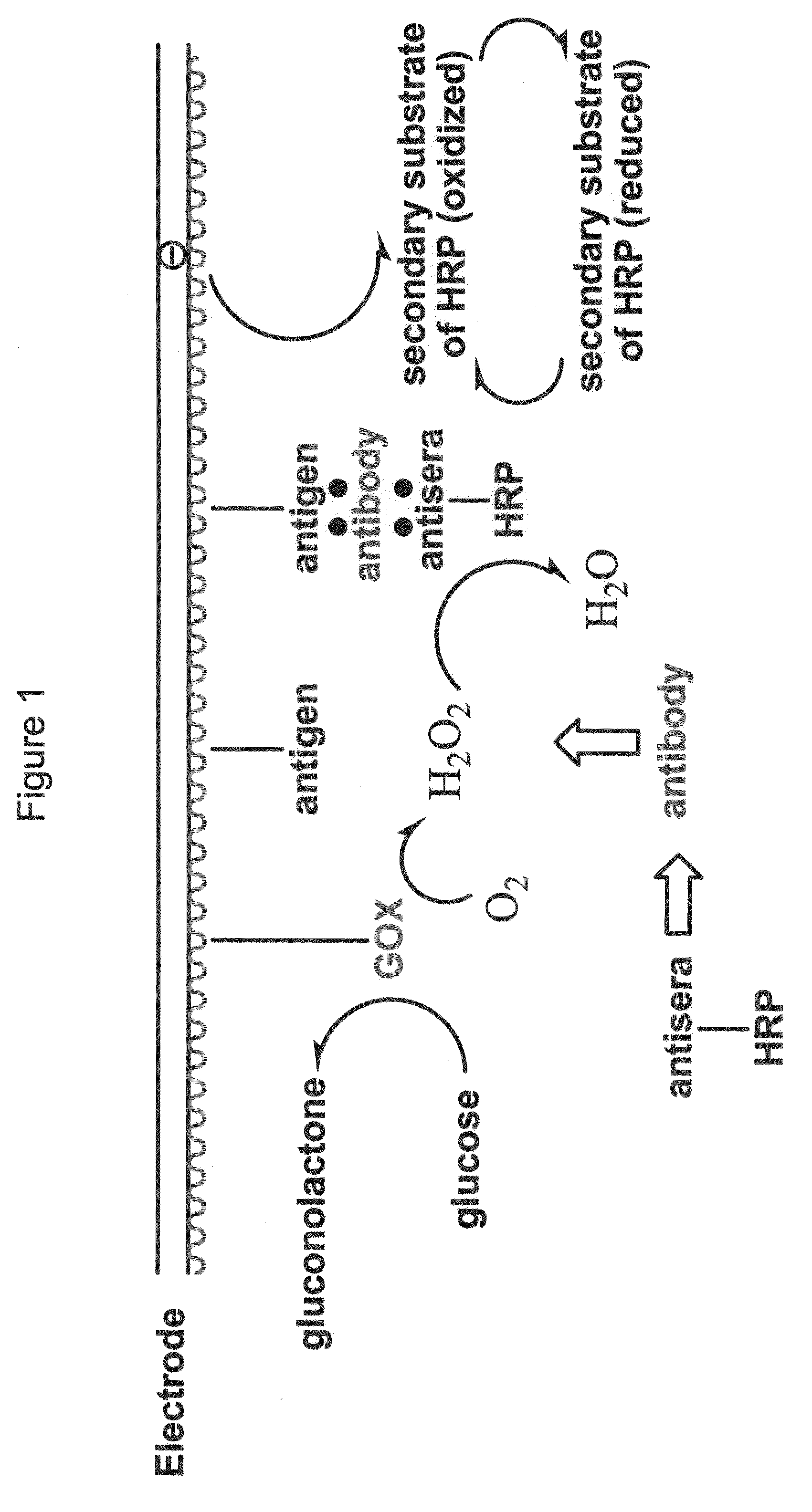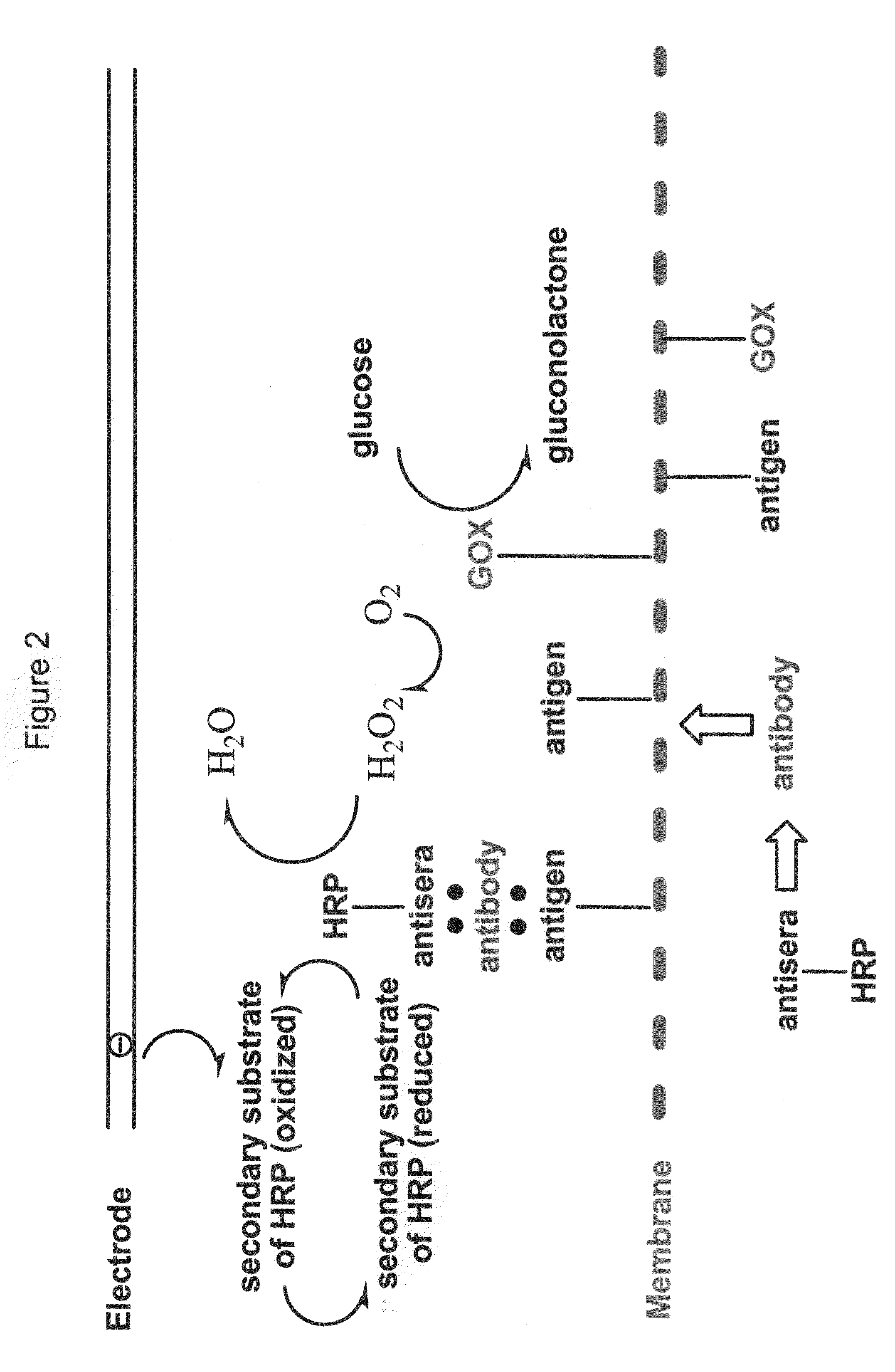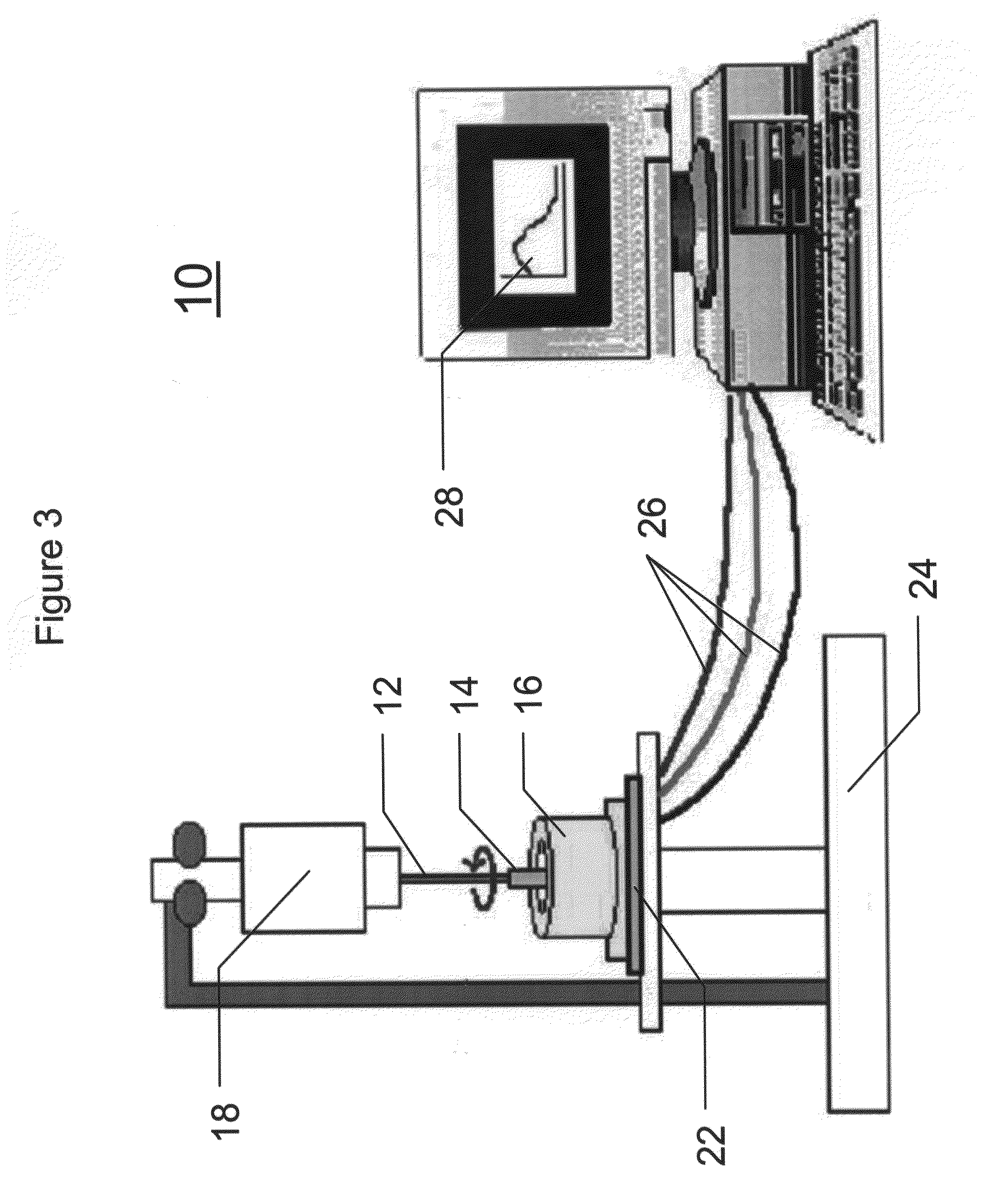Enzyme-Channeling Based Electrochemical Biosensors
a biosensor and enzyme technology, applied in the field of electrochemical biosensors, can solve the problems of inability to perform sensitive and quantitative detection of most of these rapid tests, limited the development of portable point-of-care analytical devices, complex and expensive analytical equipment, etc., and achieve the effect of efficient utilization
- Summary
- Abstract
- Description
- Claims
- Application Information
AI Technical Summary
Benefits of technology
Problems solved by technology
Method used
Image
Examples
examples
[0243]Reference is now made to the following examples, which together with the above descriptions, illustrate the invention in a non limiting fashion.
Materials and Experimental Methods
[0244]Graphite electrodes were prepared by extracting the graphite from common pencils obtained from “Dyonon” Tel-Aviv University student shop.
[0245]Screen printed electrodes (SPE) were obtained from Gwent Electronics, England.
[0246]Glucose oxidase (GOX), horseradish peroxidase (HRP), bovine serum albumin (BSA), glutaraldehyde (GA), polyethyleneimine (PEI), biotin-HRP and p-phenylene diamine dihydrochloride (PPD) were obtained from Sigma, Israel.
[0247]Dog immunoglobulin G (IgG) and anti-dog-IgG-HRP (α-dog-IgG-HRP) was obtained from Jackson ImmunoResearch laboratories Inc. (West Grove, Pa., USA).
[0248]Canine Distemper antigen virus (CDV) and dog sera were obtained from Biogal, Galed Lab., Kibbutz Galed, Israel.
[0249]Immunodyne® ABC membrane was obtained from Pall Corporation (East Hills, N.Y., USA).
[025...
PUM
 Login to View More
Login to View More Abstract
Description
Claims
Application Information
 Login to View More
Login to View More - R&D
- Intellectual Property
- Life Sciences
- Materials
- Tech Scout
- Unparalleled Data Quality
- Higher Quality Content
- 60% Fewer Hallucinations
Browse by: Latest US Patents, China's latest patents, Technical Efficacy Thesaurus, Application Domain, Technology Topic, Popular Technical Reports.
© 2025 PatSnap. All rights reserved.Legal|Privacy policy|Modern Slavery Act Transparency Statement|Sitemap|About US| Contact US: help@patsnap.com



